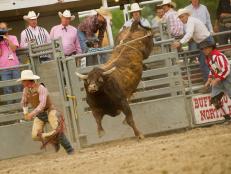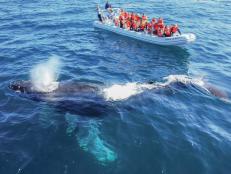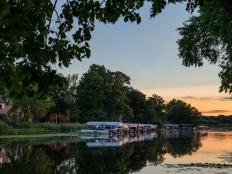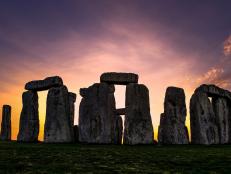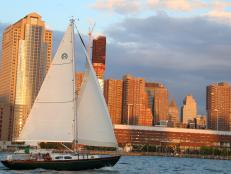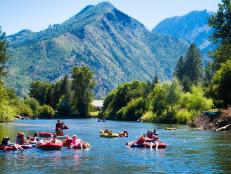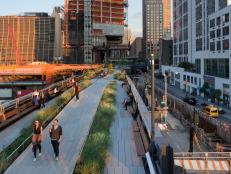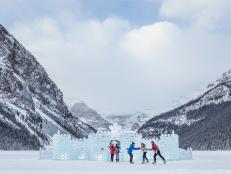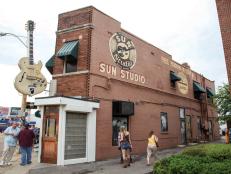8 Things You May Not Know About Bison
I say bison, you say buffalo. We’re probably talking about the same big, shaggy beasts that once roamed the Great Plains.

South Dakota Dept. of Tourism
Most of us mix them up, although scientifically speaking, American bison are the animals that live in the western U.S. We have other misconceptions, too, so we asked Chad Coppess, a photographer with the South Dakota Department of Tourism, to set us straight when we joined him at South Dakota's 51st annual Custer State Park Buffalo Roundup.
Put this free and open-to-the-public event on your bucket list. In 2017, it will be held on Sept. 29, starting at 9:30 am. Each year, tens of thousands of visitors watch from a safe distance as wranglers push the bison out of South Dakota's beautiful Black Hills, through valleys and into corrals where they're counted and vaccinated. Calves are branded.

South Dakota Dept. of Tourism
You'll see about 1,300 bison at the Custer roundup, which boasts one of the world's largest, publically owned herds. Crowds cheer as cowboys and cowgirls crack their whips in the air and urge their horses on. The bison kick up clouds of dust and thunder over the grassland into huge pens. After they're checked, they're set free to roam the park again.

South Dakota Dept. of Tourism
Take our list of bison facts to the roundup with you, so you'll never be buffaloed again.
8 Things We Think About Bison - And We're Wrong
Bison can’t survive harsh winters.
Coppess says tourists often think bison can't make it through severe winter weather--but they can. Nature equips them with thick coats and fat for insulation. Calves, however, need to stick close to their mothers. If they’re lost, they can perish in the ice and snow.

South Dakota Dept. of Tourism
Bison babies look just like the adults.
Not quite. Calves are born without humps, and their coats are light, reddish-brown. They turn darker brown and develop humps a few months later.
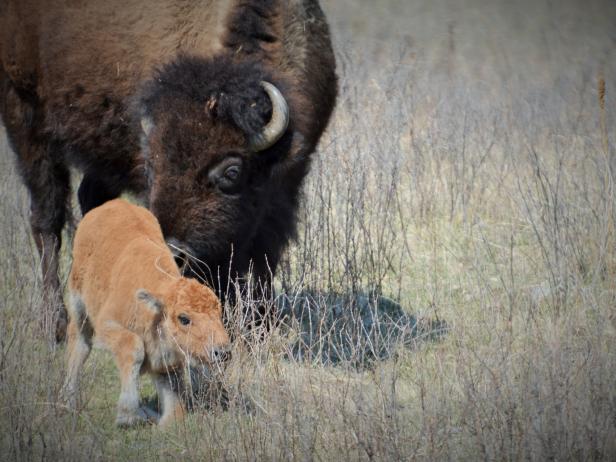
South Dakota Dept. of Tourism
Adult male bison (bulls) help raise the calves.
No co-parenting here. Mamas raise the young until they're about a year old.

South Dakota Dept. of Tourism
Bison are endangered.
While they came close to extinction, they're now considered “near-threatened.” Millions once lived out West but over-hunting, habitat loss, and diseases reduced their numbers to less than 1,000 by the 1890s. About 500,000 currently live in the U.S.; some are in commercial herds.

South Dakota Dept. of Tourism
Bison are tame, like cattle, and you can get close to make a photo.
No, no and no. Bison are wild, no matter how docile they may look. You could be gored or trampled, and no photo is worth injury or death. Bison can weigh up to a ton and stand about six feet tall at the shoulder.

South Dakota Dept. of Tourism
If a bison comes after you, you can outrun it.
Bison run faster than horses, says Coppess. Stay away, unless you can outrun a horse.

South Dakota Dept. of Tourism
Bison live only in national parks.
Some South Dakota tribes keep bison on their reservations, Coppess says, and there are refuges and zoos with breeding programs. Many Native Americans are also collaborating with government agencies and others to help protect the species.

South Dakota Dept. of Tourism
Want to see more bison--or buffalo, if you prefer? South Dakota's Wind Cave National Park is home to a smaller herd. This park, in Hot Springs, is like two parks in one. Above ground, you'll see prairie dogs, elk, pronghorn and other wildlife. Below ground, rangers lead tours past rare and beautiful mineral formations that resemble their names: popcorn, frost and boxwork.
Bison get along just fine without our help.

South Dakota Dept. of Tourism
Even with laws to protect them, herds can benefit from human management, so they don’t stay in one place and overgraze the land. In Custer State Park, the yearly roundup allows rangers to cull some bison, leaving only as many as the land can support.
Once you've seen the roundup, head to Rapid City, SD to overnight at the Alex Johnson Hotel, listed on the National Register of Historic Places. Built in 1928, it’s a blend of traditional Plains Indian decor and Germanic Tudor architecture. It's hosted six presidents, including Franklin D. Roosevelt and Ronald Reagan, along with numerous celebrities and, it’s reported, a few ghosts.
For dinner, venture out to Kol and look for its centerpiece; a nearly 10-foot wide, coal-fired oven, where your meal is prepared as you wait. Indulge in a signature cocktail, like the Cotton Candy Magic Mojito or a White Cosmo, complete with an edible orchid frozen in ice.

South Dakota Dept. of Tourism

South Dakota Dept. of Tourism
